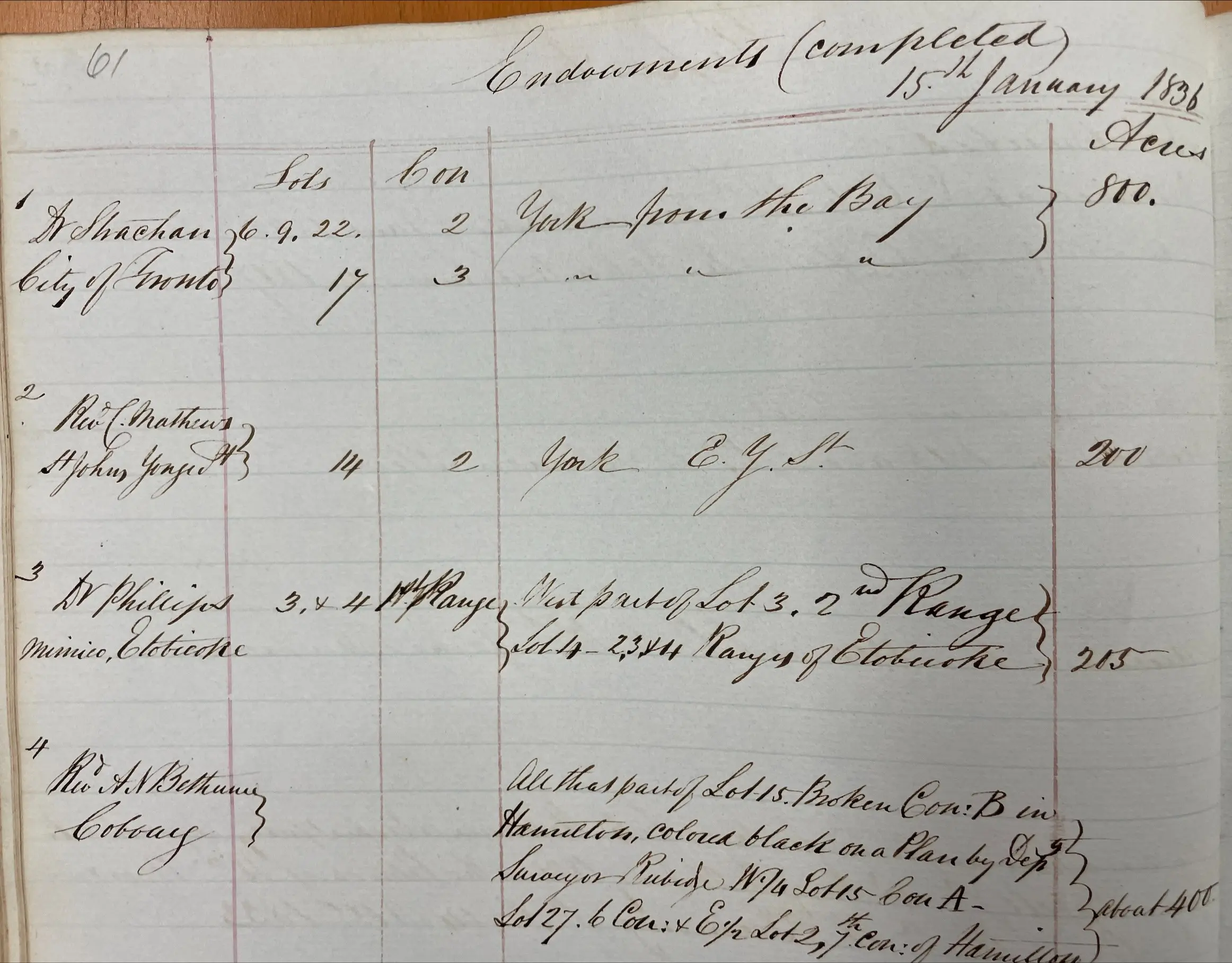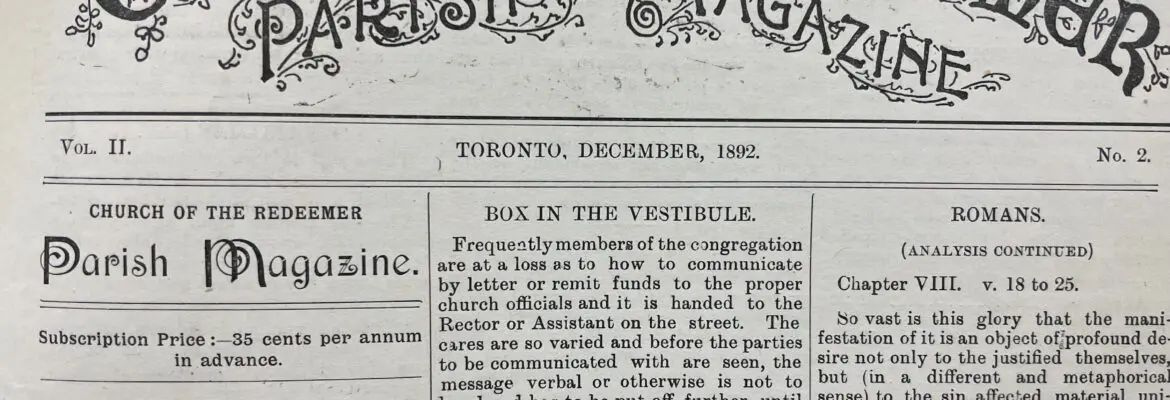
Archives Awareness A-Z
We’re joining the Archives of Ontario in its month-long #ArchivesAtoZ campaign. The aim is to increase the public’s awareness of archives and their collections. We’ll be sharing four posts throughout this month showcasing items from our holdings or providing information about Archives terminology based on each letter of the alphabet.
This week we will cover H to N!
H – Home District Clerical Association
The minute book for the Home District Clerical Association begins with the minutes of the first meeting of the association, which was held at the house of the Rev. Geo. Mortimer, Thornhill, Yonge Street on Wednesday, February 17, 1841. Those in attendance included the Rev. Grassett, curate of Toronto, the Rev. Mayerhoffer, rector of Markham and Vaughan, and the Rev. Featherstone Osler, missionary at Tecumseth. It is interesting that in 1841 the Home District Clerical Association included missionaries serving Penetanguishene, Shanty Bay and Orillia, as Simcoe County was detached from the Home District in 1837. In 1874 the Home District Clerical Association was succeeded by the Yonge Street Clerical Association. In 1876 this became the North York Rural Deanery and in 1885 the West York Rural Deanery.
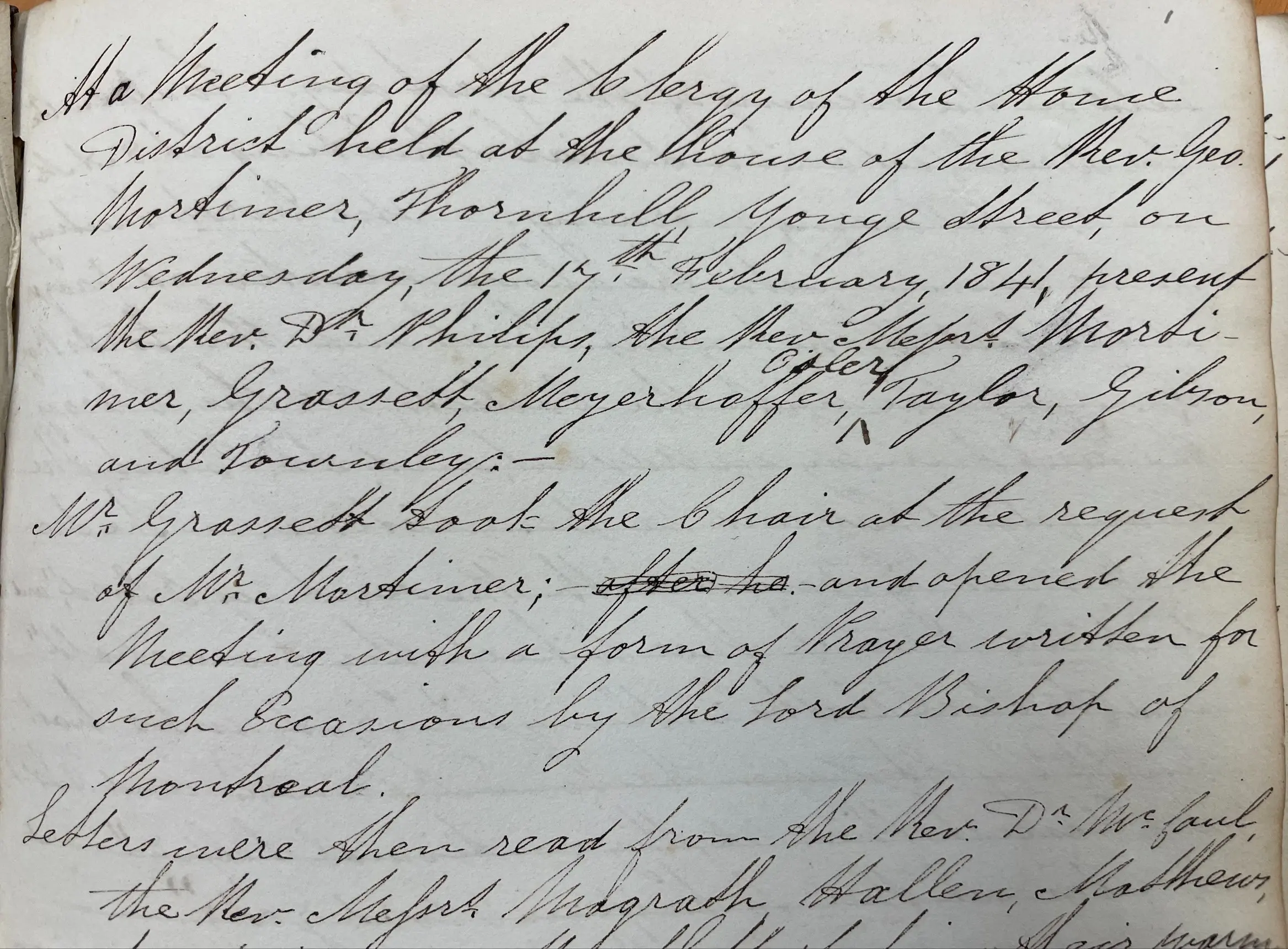
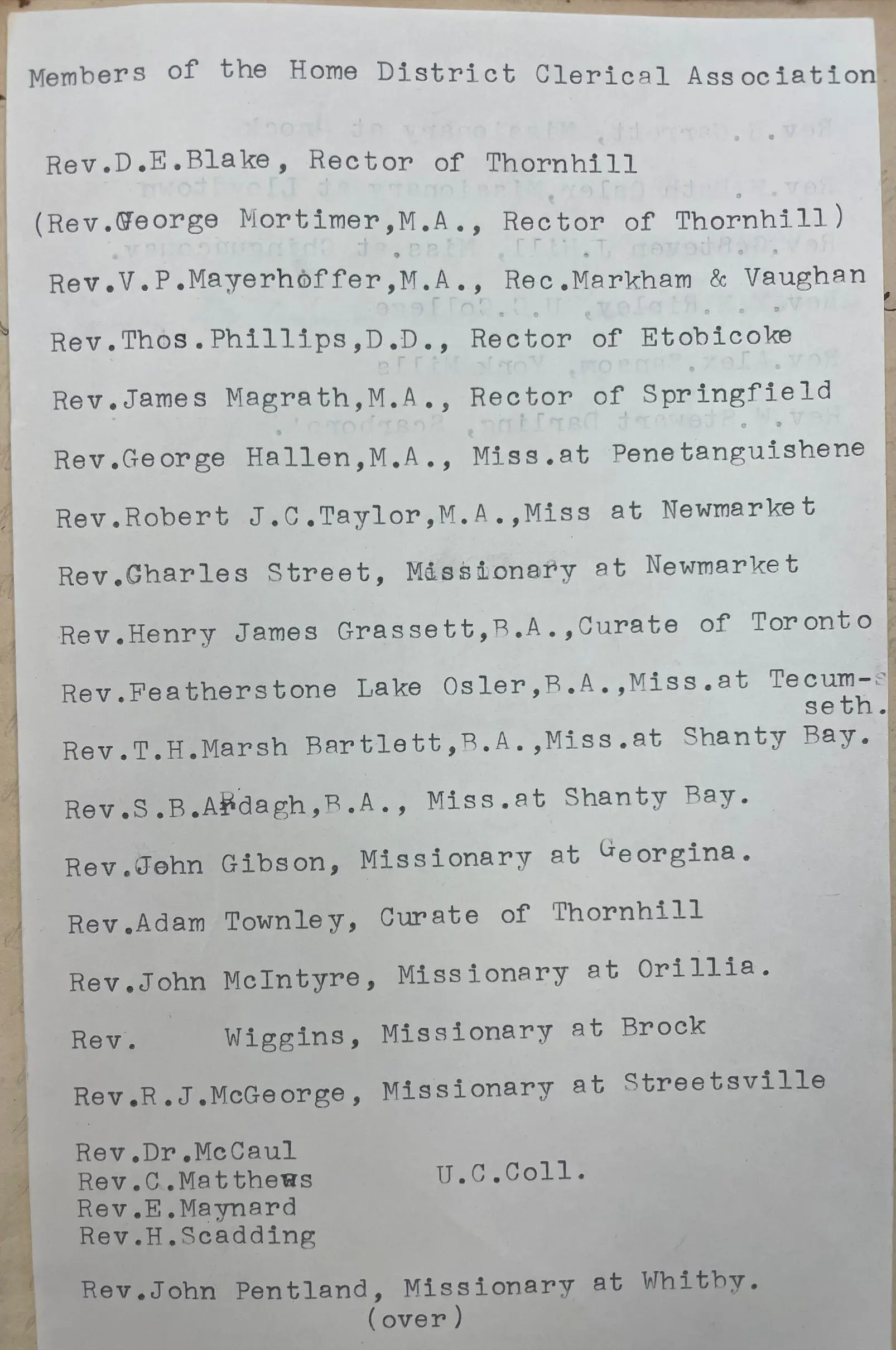
I – Iron Gall Ink
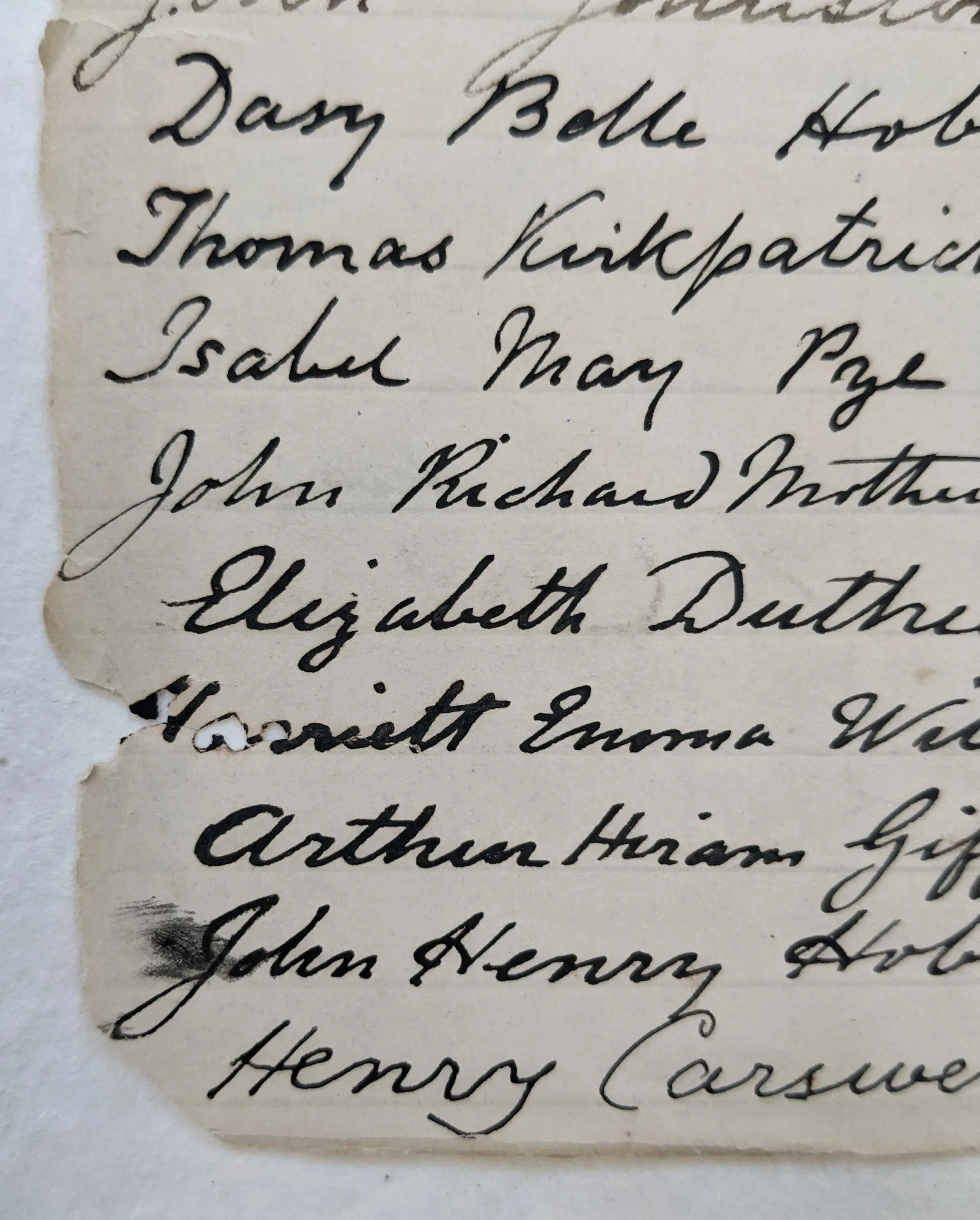
Iron gall ink was a standard ink formulation used in the 1800s when some of our earliest records were created. Iron gall ink is quite acidic and can be corrosive to paper over time causing degradation, particularly if exposed to high humidity or water. Some of the registers from the 1800s that are held by the Archives show signs of iron gall ink degradation. The Archives received grant funding through the federal Documentary Heritage Community Program (DHCP) in 2022 to complete some necessary conservation work. This included stabilizing the pages of one of our registers that had significant degradation caused by iron gall ink, which was creating holes in the page and therefore risking the loss of information. The conservator used Japanese paper with an alcohol-based adhesive to stabilize the page and prevent further deterioration. The most severely affected pages were then interleaved with an archival paper containing an alkaline reserve to buffer the acidity.
J – Junior Clergy Association
The Archives holds the minutes for the Junior Clergy Association (JCA) for the period 1923-1934. This was not a committee of Synod and therefore there is little information about this group documented outside what is captured in the minutes. The JCA was established in 1922 and a constitution was written up. The association also set two objectives: 1. The promotion of fellowship and mutual understanding among the Junior Clergy of the Diocese and 2. A determination of the contributions which the Junior Clergy can make to the life of the Church, and action in whatever direction is necessary for making such contribution. Unfortunately, it is unclear whether this association continued after 1934, and if so for how long. Although the minutes end partway through a book, there is no indication in the last few entries that the JCA was to be dissolved.
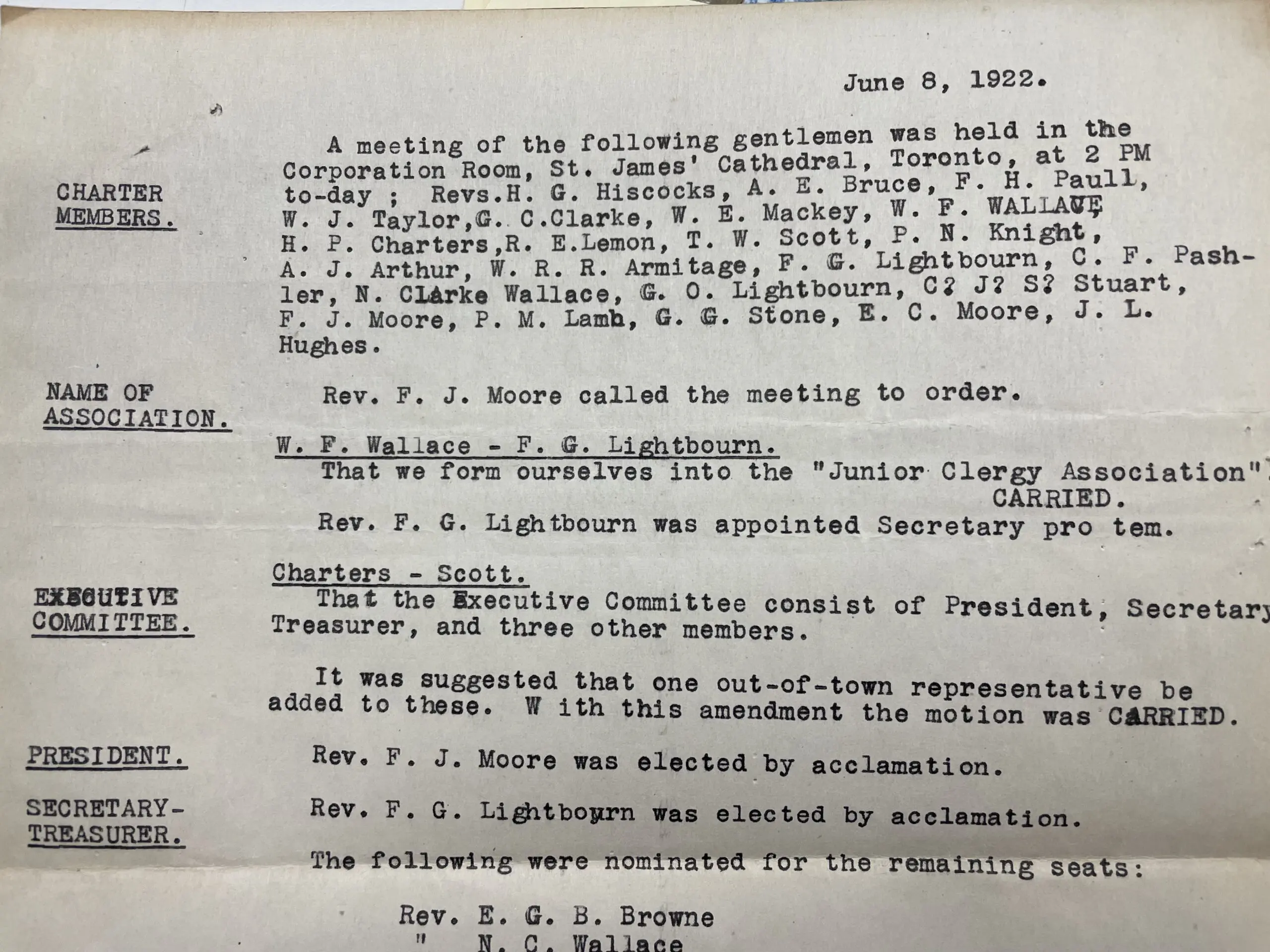
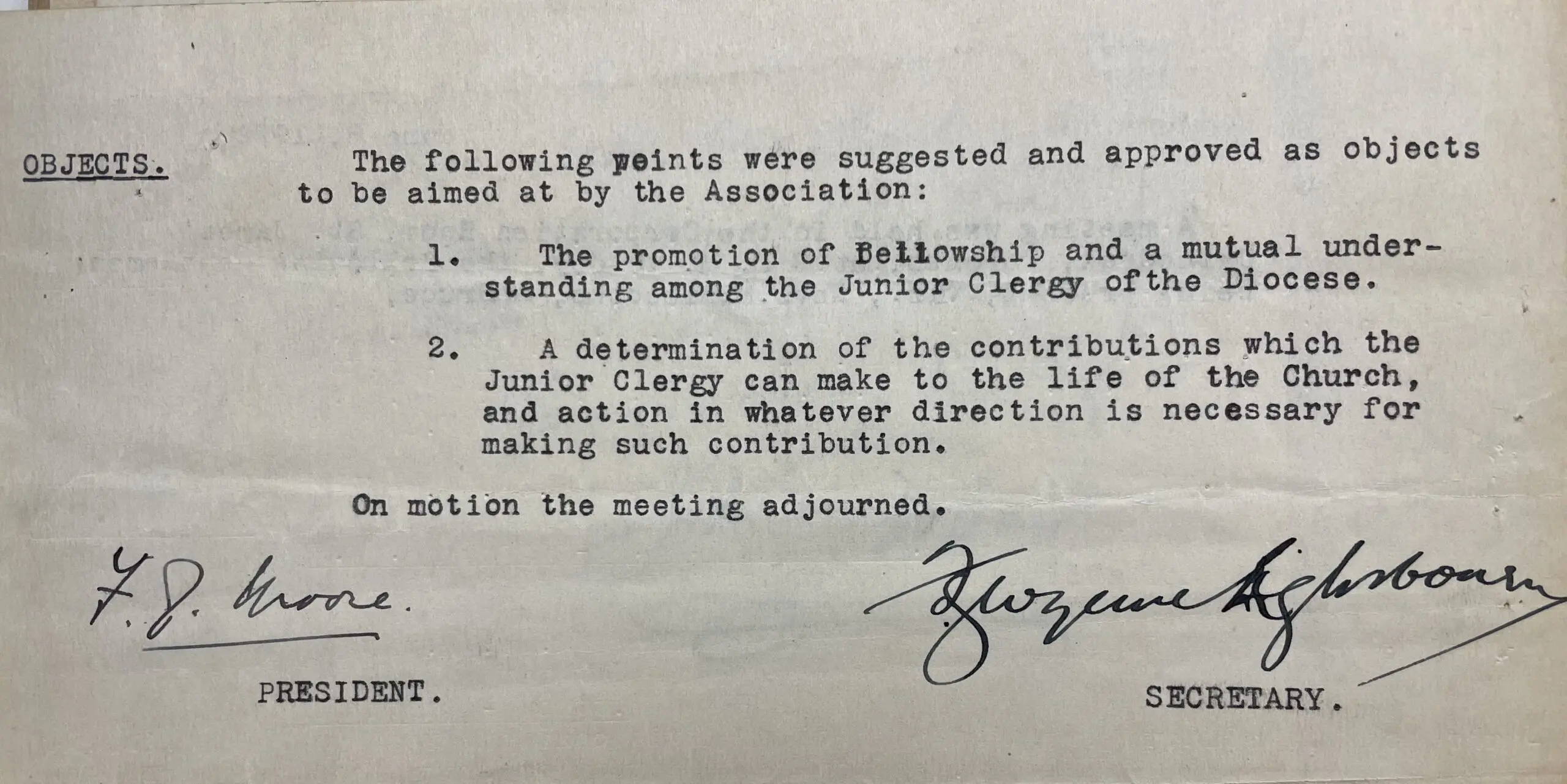
K – St. Thomas, Kleinburg
Working in the Archives, we often learn something new, either through a search request or while reviewing records. This week, as I struggled to find a word for the letter K, I learned of St. Thomas, Kleinburg. This was a congregation that was part of the Parish of Woodbridge. It was first listed in the Synod Journals in 1883. The church itself was not built until around 1886, as the bishop notes in his charge to the 1887 Synod that “six new churches have been erected during the past year. . . St. Thomas’s, in the village of Klineburg (sic), of brick, value $1,200 with 120 sittings.” On May 22, 1894, the church was consecrated. According to a note dated 1926 and found in the property file, the church closed around 1906, though it was still listed in the Synod Journal up until 1917. There are not a lot of records in the Archives for St. Thomas, Kleinburg, though the few records we do have are accessioned under the parish of Woodbridge.
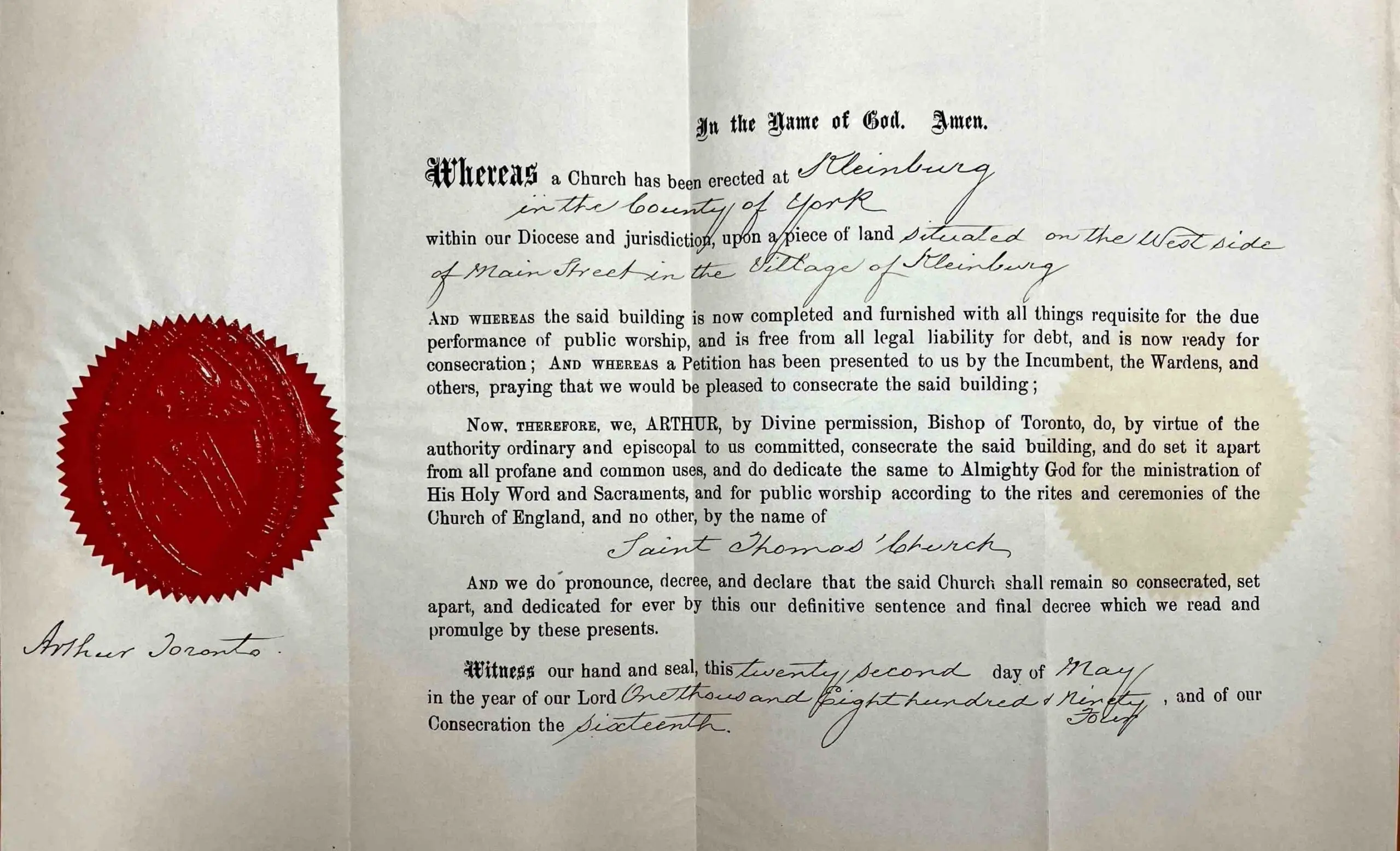
L – Land
Land has been acquired, within the boundaries of the current Diocese, going back to before the Diocese of Toronto was set aside in 1839. These earlier grants of land were often transferred to the missionary for the particular area, in order that a church might be built or to provide an endowment for a church in a particular township. The Archives holds a land register for the period 1845-1849, which also includes a listing of Endowments that had been received as of January 15, 1836. It provides information on who the endowment was made to, the lot number and concession number, the property description per deed of land, as well as the number of acres.
M – Magazines
Parish magazines or newsletters can be a wonderful source of information about the life and work of a congregation over time. Some congregations may have published a magazine or newsletter over many years, while others may have published one for only a few years. The Archives holds parish magazines dating back to the 1890s for several congregations, including Church of the Redeemer, St. Stephen in-the-Fields, and Church of the Epiphany. These early magazines included a congregation-specific newsletter on the first two to four pages that detailed events, meetings and social activities of the congregation, as well as local advertisements. This was followed by an insert of the Parish and Home Magazine, a monthly magazine published in England and sent out for local distribution.
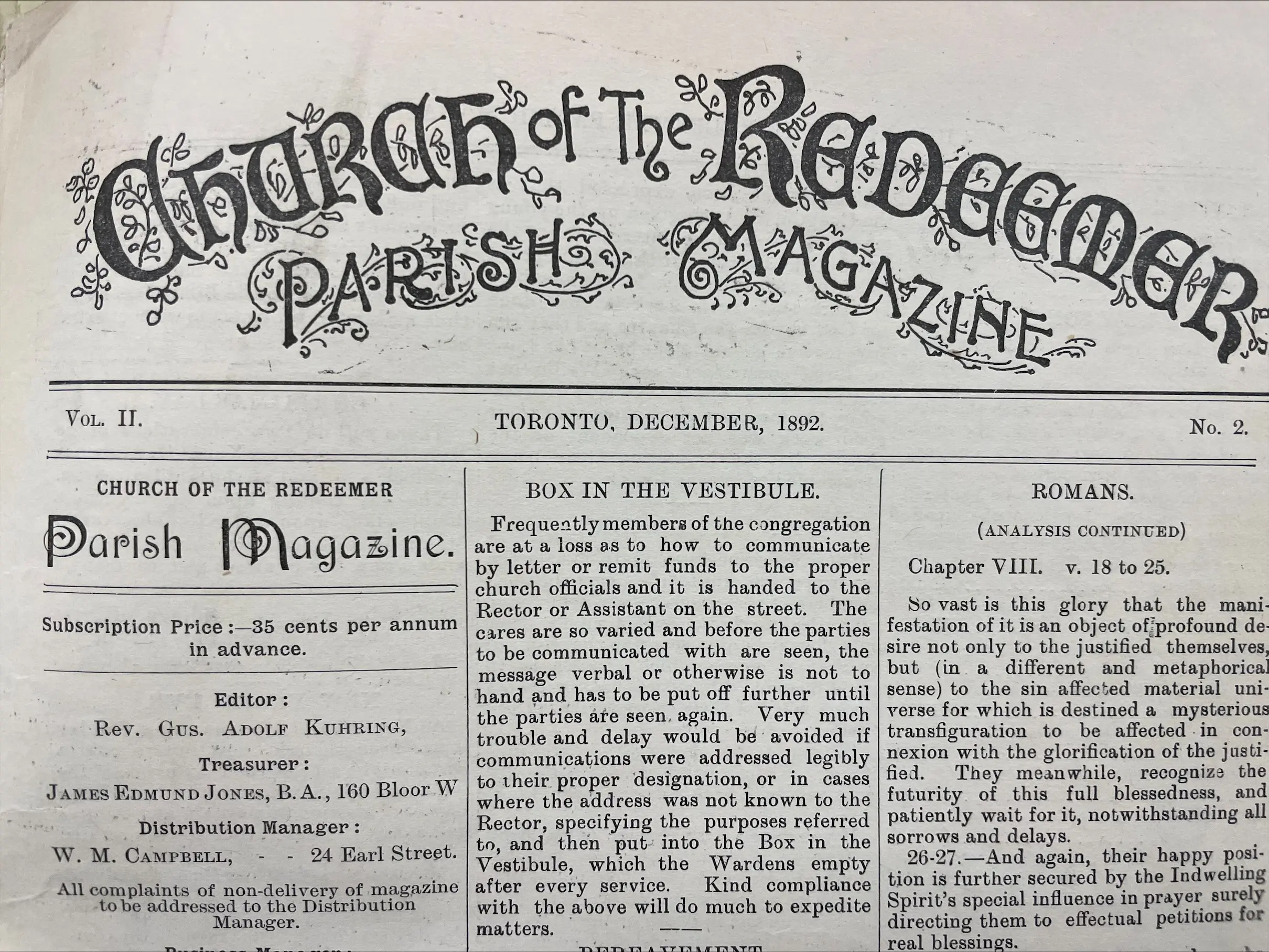
N – Newspaper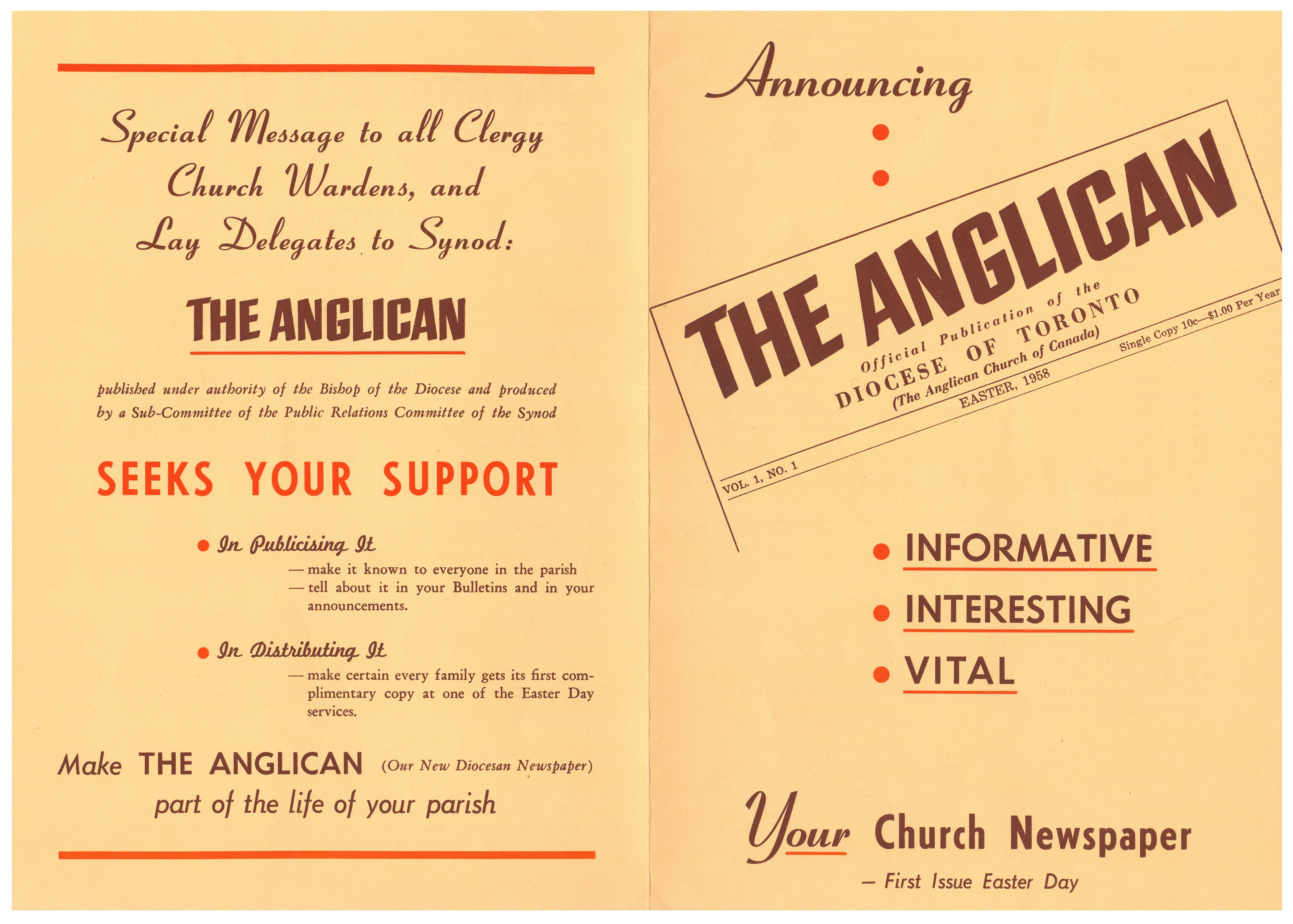
In 1956, Bishop Frederick Wilkinson began to plan for the first diocesan newspaper, seeking insights from local publishers on what would make for a good newspaper. The first issue of The Anglican was published as the Easter 1958 edition. The front-page story related to the plans for the new Diocesan Centre at 135 Adelaide Street East. Inside, there is an article by the bishop explaining the need for a diocesan newspaper. He advised it would allow for better communication and sharing about the activities of parishes and organizations within the Diocese.
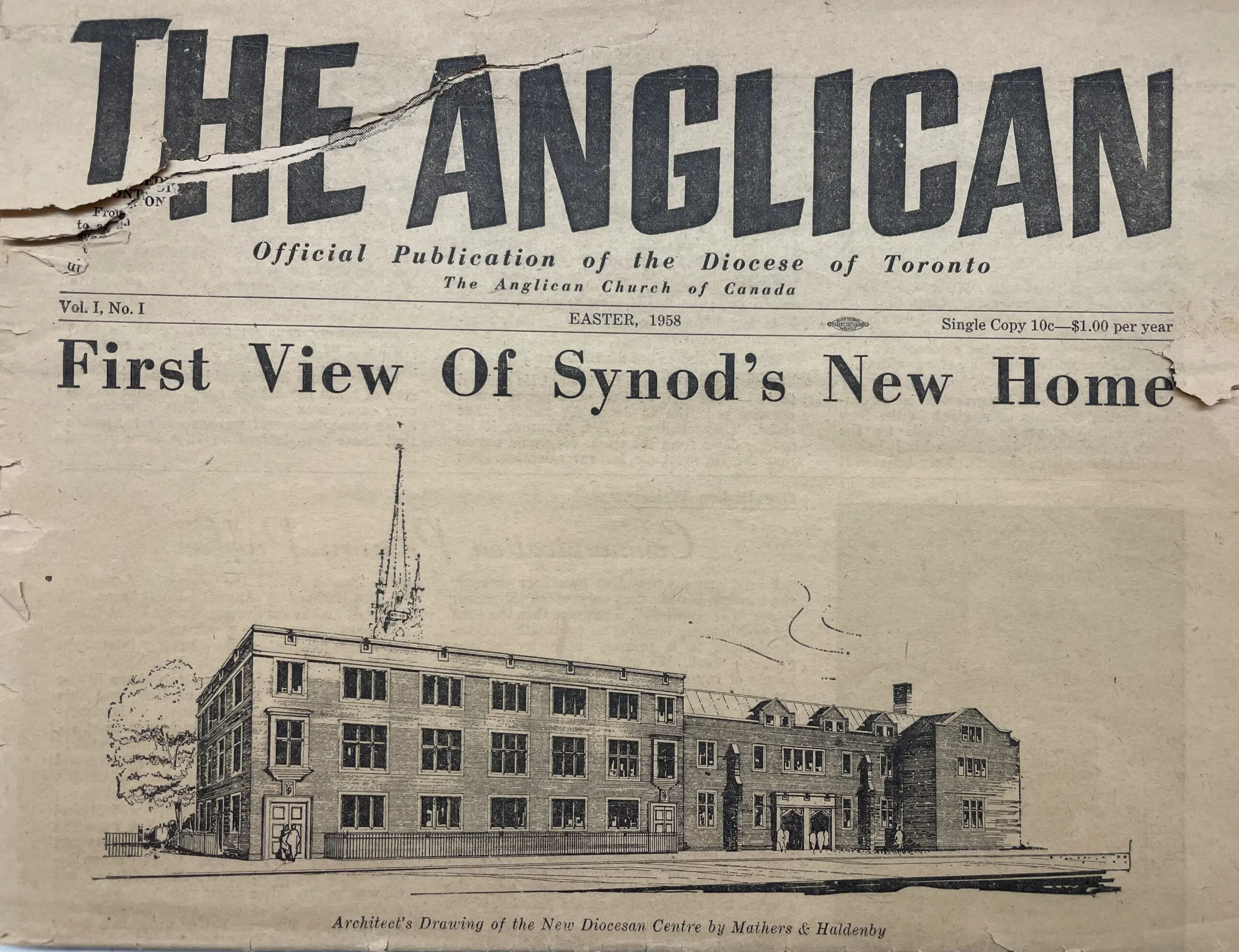
Next week we will share Archives Awareness O-T!
